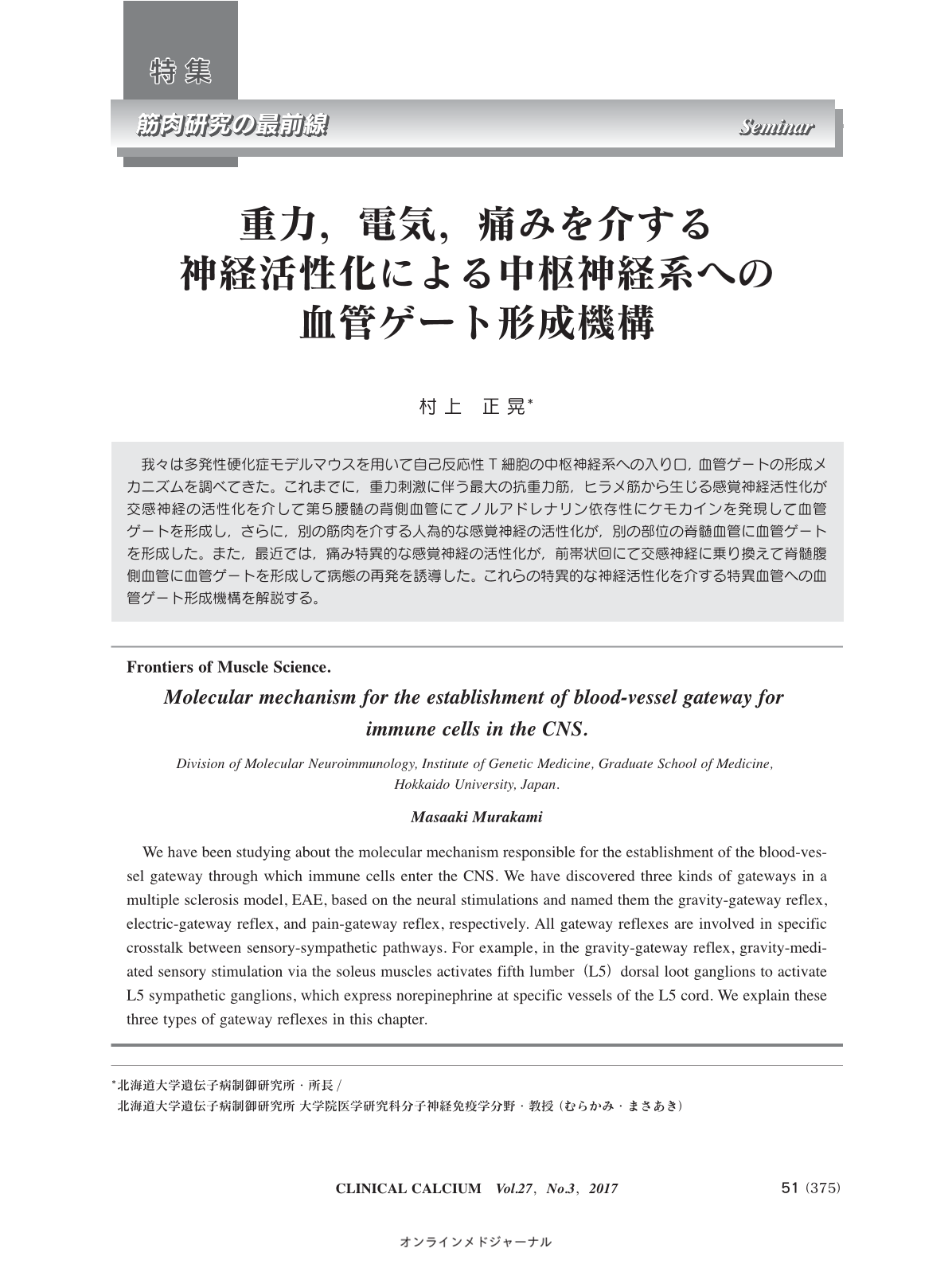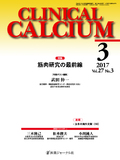Japanese
English
- 有料閲覧
- Abstract 文献概要
- 1ページ目 Look Inside
- 参考文献 Reference
我々は多発性硬化症モデルマウスを用いて自己反応性T細胞の中枢神経系への入り口,血管ゲートの形成メカニズムを調べてきた。これまでに,重力刺激に伴う最大の抗重力筋,ヒラメ筋から生じる感覚神経活性化が交感神経の活性化を介して第5腰髄の背側血管にてノルアドレナリン依存性にケモカインを発現して血管ゲートを形成し,さらに,別の筋肉を介する人為的な感覚神経の活性化が,別の部位の脊髄血管に血管ゲートを形成した。また,最近では,痛み特異的な感覚神経の活性化が,前帯状回にて交感神経に乗り換えて脊髄腹側血管に血管ゲートを形成して病態の再発を誘導した。これらの特異的な神経活性化を介する特異血管への血管ゲート形成機構を解説する。
We have been studying about the molecular mechanism responsible for the establishment of the blood-vessel gateway through which immune cells enter the CNS. We have discovered three kinds of gateways in a multiple sclerosis model, EAE, based on the neural stimulations and named them the gravity-gateway reflex, electric-gateway reflex, and pain-gateway reflex, respectively. All gateway reflexes are involved in specific crosstalk between sensory-sympathetic pathways. For example, in the gravity-gateway reflex, gravity-mediated sensory stimulation via the soleus muscles activates fifth lumber(L5)dorsal loot ganglions to activate L5 sympathetic ganglions, which express norepinephrine at specific vessels of the L5 cord. We explain these three types of gateway reflexes in this chapter.



